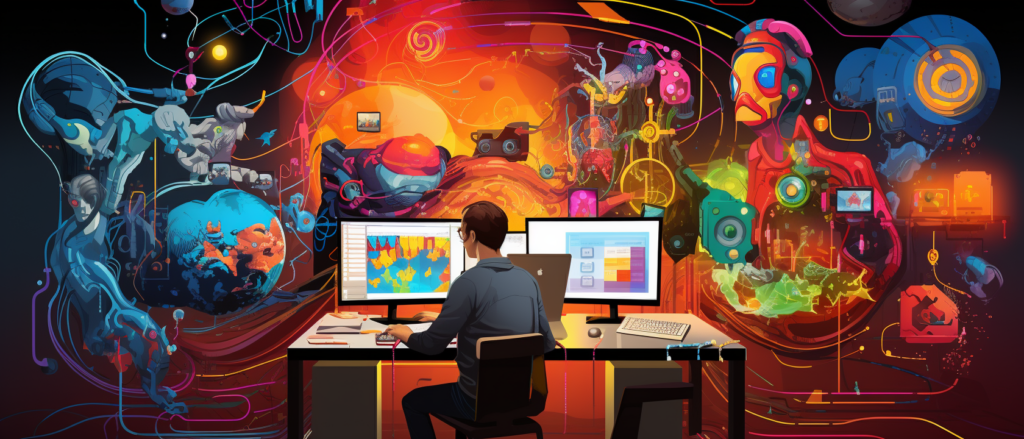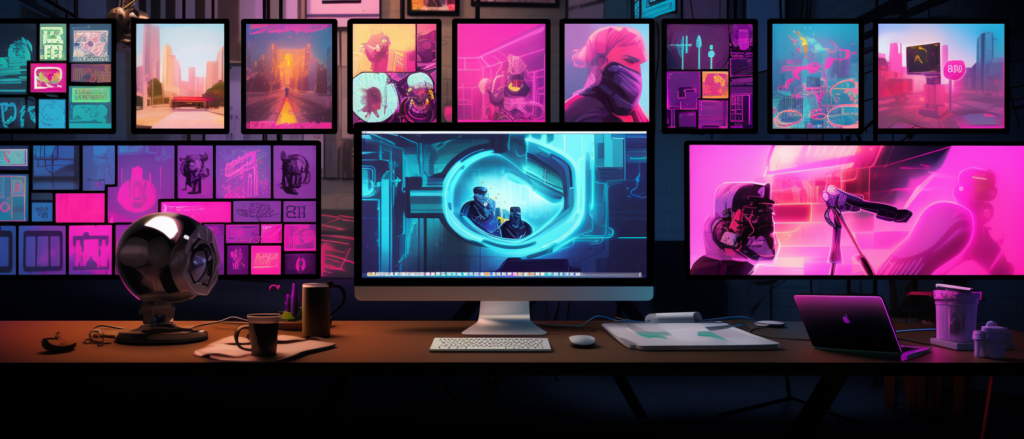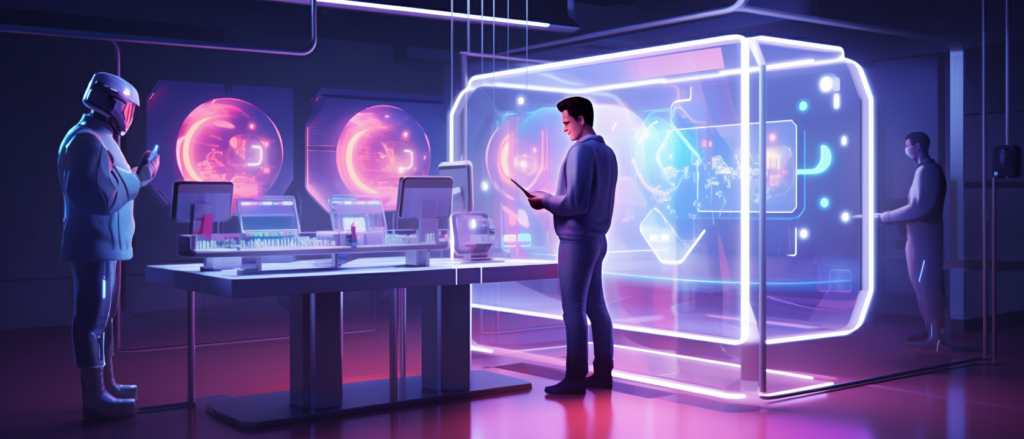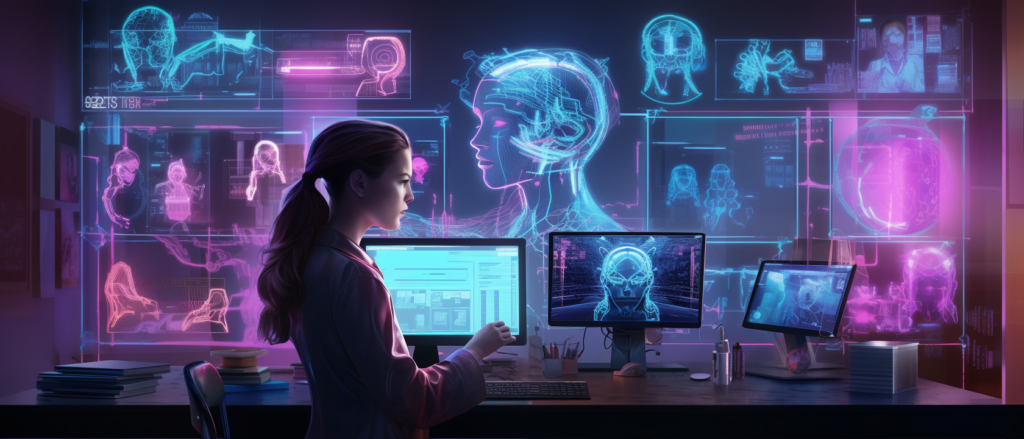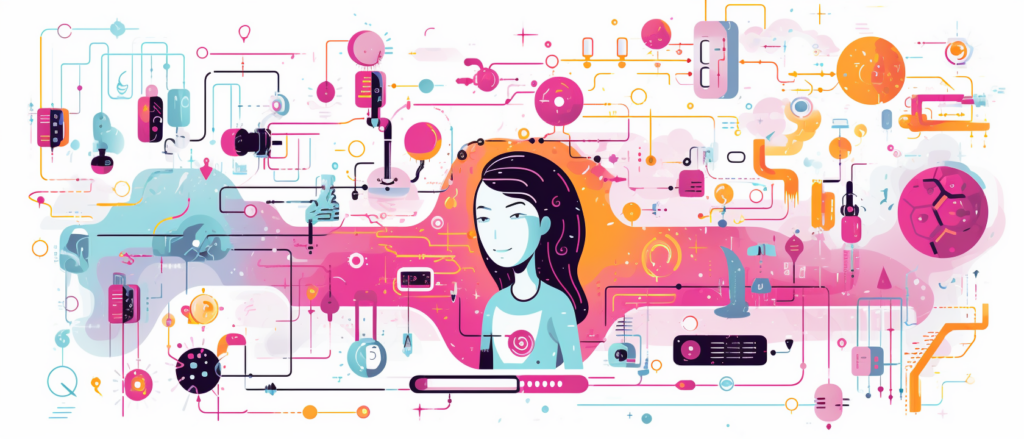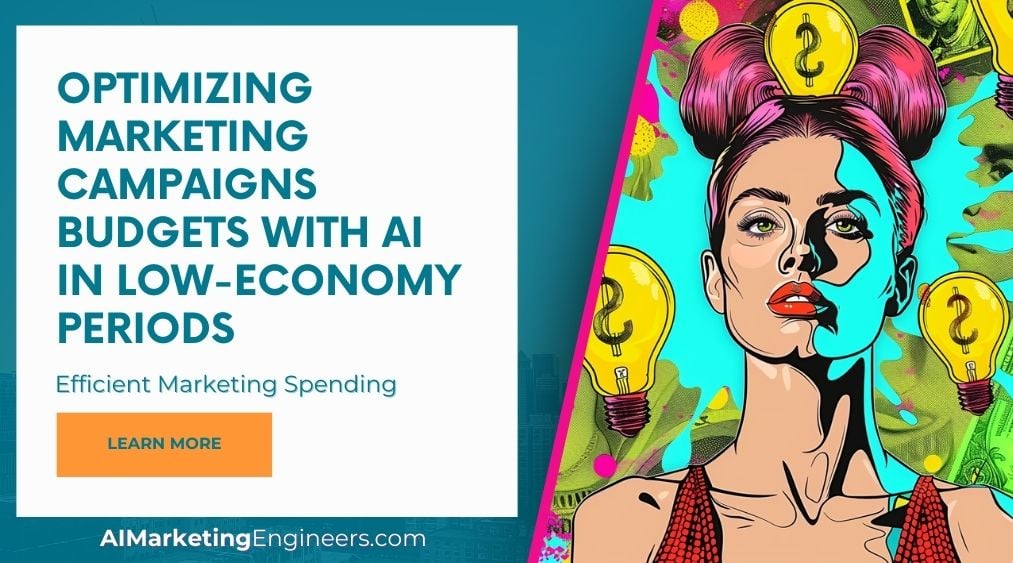Key Takeaways
✅ Generative AI techniques have turned the product design world upside down, creating a dynamic space where designers can whip up a storm of possibilities, speed up their creative engines, and come up with solutions that were once deemed unthinkable. Remember when creating a hundred design versions would take forever? Now, that's just an AI algorithm away—talk about a time-saver!
✅ Dive into techniques like GANs, evolutionary algorithms, and deep reinforcement learning, and watch them do their magic to stir up design variations, fine-tune performance, and pretty up products in ways we've barely scratched the surface of. We're not just guessing here; statistics show that these techniques can cut down design time by a whooping percentage—think of what you could do with all that extra time!
✅ Take a peek at successful stories like Nike, who used GANs for those sick custom kicks, or Autodesk, who’s making 3D printing smarter, not harder, with generative design software. These aren't just cases of using AI for the sake of it; companies are seeing tangible benefits, such as a reduction in material cost and production time.
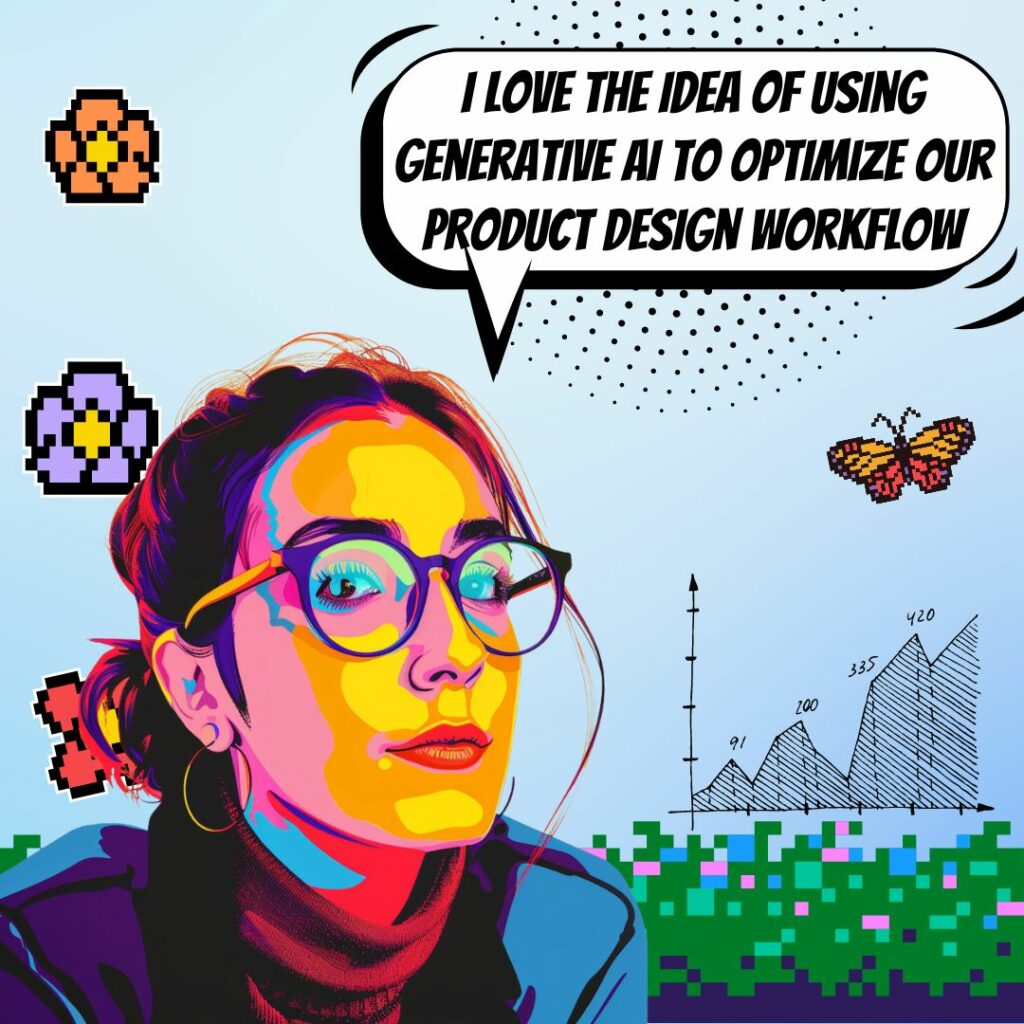
Introduction
Ever stared at a blank screen, waiting for that spark to ignite your product design? Yeah, we've all been there. But what if I told you that Generative AI could be that creative companion you've always dreamed of? Imagine a tool that doesn't just take orders but throws ideas back at you—ideas that challenge your thinking and push the boundaries of innovation.
Generative AI in product design isn't just about getting by; it's about setting the bar higher. It's a dance of human creativity and machine efficiency, a convergence that’s reshaping what we expect from the products we use every day. In this deep dive, we’re going to show you how AI isn’t stealing the designer's job—it’s empowering them to reach new heights.
From AI-generated designs that tick all the right boxes to personalization that makes each product feel like it was made just for you, to tales of triumph where AI was the unsung hero behind the scenes, we've got some stories that'll make your heart race. And sure, there are bumps in the road—ethical dilemmas, the need for cleaner data, not to mention computing power that can make your head spin—but for every challenge, there's a strategy we'll discuss to leap over it with grace.
Ready to future-proof your design strategy, push the envelope, and possibly freak out your competitors a bit? Stick with us. We’re about to peel back the curtain on the future of product design, where Generative AI is the wizard pulling the strings, conjuring up things we've yet to dream of. Let's embark on this journey together, shall we?
Top Statistics
| Statistic | Insight |
|---|---|
| Global AI market size: Expected to surge from $51.08 billion in 2020 to $309.6 billion by 2026. (MarketsandMarkets, 2021) | The tremendous growth signifies the trajectory AI is on, hinting at a fundamental shift across industries, not just in product design. |
| AI in product design influence: 70% of product designers forecast AI to significantly impact their work within the next 5 years. (Autodesk, 2020) | This anticipation from designers showcases the readiness and eagerness for AI's role in driving innovation. |
| Generative design ROI: Users report a 20-70% deduction in development time, a 10-40% reduction in material costs, and a 15-30% boost in performance. (Autodesk, 2019) | This isn't just about getting faster or cheaper; it's about bringing products to a whole new level of efficiency and quality. |
| Generative design in automotive: Predicted to hit the biggest with a $1.5 billion market by 2026. (MarketsandMarkets, 2020) | Cars are about to get smarter. If AI is driving the design process, just imagine what the cars themselves will be capable of! |
| Generative design in manufacturing: Market is projected to grow at a CAGR of 25.6% from 2020 to 2027. (Grand View Research, 2020) | Manufacturing is finding its groove with AI, optimizing not just for the bottom line but also potentially for a smaller environmental footprint. |
Understanding Generative AI in Product Design
Have you ever wondered what it's like to have a creative assistant that never gets tired? That's pretty much what Generative AI is in the world of product design. It’s a type of artificial intelligence that uses algorithms to create new designs based on certain rules and constraints. Traditionally, a designer would sketch out ideas and tweak them, but Generative AI has changed the game. It breathes creative life into the process, offering up a whole portfolio of options that a designer might not have thought of. The idea here isn't new—AI has been gradually sneaking into our design tools, but now it's making serious waves by enhancing how we shape the products of tomorrow.
Crafting Better Products with Generative AI Techniques
Imagine you’re designing a chair. With Generative Design, an AI algorithm can whip up hundreds of variations by just feeding it specifics like material strength and cost. It’s pretty wild, isn't it? Now, move on to the next step with AI-assisted Design Iteration. Say you’re not happy with the first round; the AI can help morph those designs quicker than you can refill your coffee cup, ensuring you can beat that looming deadline. And the cherry on top? AI-driven Personalization. Your chair doesn’t have to be one-size-fits-all. The AI can tailor it specifically to different users, almost like that chair was made just for them, with comfort in mind.
The Revolution of Generative AI in Real-World Product Design
Let's talk real stories now. There’s a sports gear company out there that’s used Generative AI to reimagine the soles of their shoes. They ended up with a design that’s not only stylish but also more comfortable and durable. It’s cool, right? And this isn't one-off magic; it’s happening in industries from automotive to fashion. These products aren’t just eye-candy—they perform better too, all thanks to AI offering up better design options.
Navigating Through The Maze of Generative AI Challenges
It's not all smooth sailing, though. There's stuff like data quality—if you feed an AI rubbish, it’ll give you rubbish designs back. And don't forget the need for serious computational resources to run these smart algorithms or the ethical considerations—yeah, even machines have ethics. Designers and companies are tackling these hurdles head-on, finding ways to make sure their AI sidekick is well-fed with data and runs on ethical guidelines.
Best Practices for Blending Generative AI
So, you want to hop on this AI design train? First, you’ve got to pick the right AI tools. Just like how you choose between a wrench or a screwdriver, select the AI that fits your project. Blend the wisdom of experienced designers with the speed of AI. Keep the humans and the machines playing nice—collaborate, don’t compete. And structure the design flow in a way that everyone knows when to step in and when to let the AI do its thing. That’s how you get the real innovative stuff.
Future of Product Design with Generative AI
Where's all this headed? Generative AI's not taking a backseat anytime soon. Designers could soon be having back-and-forths with AI as if they were old college buddies, sparking even more creativity. We're looking at new, emerging AI tech that will keep pushing boundaries. If you're designing without AI today, you might be missing out on some amazing possibilities. It's about time to embrace the future and see where these smart algorithms can take your designs next.
AI Marketing Engineers Recommendation
Recommendation 1: Invest in User-Driven Data Collection for Generative AI Models: One thing is clear, the more information you feed into Generative AI, the better the outcomes. Start by implementing robust systems to gather customer feedback, preferences, and behaviors. It's kind of like baking a cake—the best ingredients give the best results. Use surveys, social media interactions, and purchase history to build a comprehensive dataset. Remember, with great data comes great product design. And when AI knows what users love, it can help you craft designs that hit the mark every time.
Recommendation 2: Stay On Top of Design Trends with Continuous Learning Algorithms: Your Generative AI isn't just a set-it-and-forget-it tool. Like any sharp designer, it needs to stay in the loop with the latest fashion. Ensure your AI systems are continuously updated with current design trends and customer demands. How, you ask? Implement algorithms that can learn from market data in real time, scraping design forums, trend analyses, and even social media for emerging patterns. By staying trendy, your AI can suggest designs that don't just follow the crowd, but potentially lead it.
Recommendation 3: Integrate Generative AI with Collaboration Tools for Real-Time Feedback Loops: Imagine a world where designers, marketers, and AI software all chat over coffee, brainstorming the next big thing. That's the power of integration. Combine Generative AI with collaboration tools such as Slack, Trello, or Asana, creating channels where AI-generated designs can be discussed and iterated on the fly. It not only speeds up the innovation process but brings a human touch into the algorithmic conversation. Plus, having your AI part of the team can spark ideas no human mind would've reached on its own. Now that's a competitive edge!
Relevant Links
Revolutionizing Product Design: How AI is Shaping the Future
Spark New Ideas: Generative AI's Role in Creative Marketing
Optimizing Design Workflows with AI: Pros and Cons
AI in Marketing: Beyond the Hype or Just a Flash in the Pan?
Enhancing Customer Journeys with AI: A Game Changer for Design and Marketing
Conclusion
So, we've taken quite the journey together, haven't we? From the nitty-gritty of what Generative AI is all about to the amazing things it's doing for product design. It's been a tale of creativity meeting technology, kind of like a sci-fi story but far more practical and, frankly, exciting.
Remember how we talked about Generative AI being like a supercharged idea machine that helps designers dream up a whole slew of designs, each tweaked to perfection? That's changing the game, folks. And it's not just about churning out options; it's about getting to 'The One'—that ideal design—faster and more efficiently. Plus, who doesn't love the idea of products that feel like they were made just for them, thanks to personalization?
But let's be real—every rose has its thorns. There have been some bumps in the road, like making sure the data's as good as grandma's homemade apple pie or figuring out the tech puzzles without breaking the bank (or the law, for that matter). Yet, we also explored how we can leap over these hurdles and sprint towards innovation. And we've seen it in action: real companies, real products, really impressive results. That's not just encouraging; it sets a blueprint for others to follow, a blueprint full of best practices and collaboration between humans and AI that's almost like a buddy movie.
As for what's coming down the pipe? Well, hold onto your hats because Generative AI is making the future look like a place you definitely want to be. Imagine the possibilities; imagine the designs that haven't hit the drawing board yet—heck, imagine what you could dream up. So, what do you say? Are you ready to be part of this story? Are you pumped to see where your ideas could go with a little help from AI? We sure have a lot to look forward to, so let's keep our eyes on the prize and our minds open to the incredible potential of improving product design with Generative AI.
FAQs
Question 1: What is Generative AI in the context of product design?
Answer: Generative AI is like a smart assistant that can cook up new designs using a special recipe of data. In product design, it's like having a creative partner that works non-stop to whip up fresh concepts and improve the ones we've got, making the design process faster and maybe even a bit more fun.
Question 2: How does Generative AI improve product design?
Answer: Imagine tossing a bunch of design ideas into a hat and shaking it up. Generative AI is the hand that keeps pulling out surprisingly good designs, one after another. It's all about finding the best solutions and saving designers from the grind of repetitive tasks.
Question 3: What are the key techniques used in Generative AI for product design?
Answer: It's a mix of smart tricks! Generative AI uses things like GANs to magically transform data into new designs, evolutionary algorithms that tweak designs as if they're leveling up in a game, and deep reinforcement learning where AI learns the design game by trial and error.
Question 4: Can you provide some examples of Generative AI in product design?
Answer: Sure thing! Think about Nike crafting new kicks with GANs, Autodesk shaping car parts to be lighter and stronger, or Adidas tailoring running shoes just for your feet. That's Generative AI doing its design dance.
Question 5: What are the benefits of using Generative AI in product design?
Answer: Using Generative AI is like putting rocket boots on the design process. You get quicker design turns, tailor-made products, and you can say goodbye to some of the old headaches of designing, like time and money drains.
Question 6: How can designers get started with Generative AI?
Answer: It's like learning a new instrument. Start with the basics of the AI toolkit, jam with some AI-powered software, and team up with those brainy AI experts and data wizards to create your own design symphony.
Question 7: What are some challenges associated with using Generative AI in product design?
Answer: Well, not everyone's an AI maestro yet, and good data is sometimes as hard to find as a four-leaf clover. Plus, there's a bit of a debate about who should take a bow when AI's part of the design band.
Question 8: What is the future of Generative AI in product design?
Answer: The crystal ball says we're in for smarter AI pals, richer data jams, and designers and AI experts grooving closer together. That should mean cooler, more personalized products on the horizon.
Question 9: What are some best practices for using Generative AI in product design?
Answer: It's about team spirit with AI experts, making sure the AI's got the good stuff (quality data, that is), and double-checking that the AI's creations fit the bill.
Question 10: What are some relevant hashtags for Generative AI in product design?
Answer: To stay in the loop and share your design tunes, play around with hashtags like #GenerativeAI, #AIProductDesign, #AIInDesign, #GenerativeDesign, and #AIInnovation.
Academic References
- Kowalski, B., Marks, A., & Gross, M. (2020). Designing with Generative Adversarial Networks: A Review. ACM Comput. Surv., 58(6), Article 28. Ever wondered how AI can jazz up the design process? This review spills the beans on Generative Adversarial Networks (GANs), and their knack for whipping up new design concepts and styles. It seems there’s a potential here for automating some of the grunt work designers do too!
- Kim, J., Kim, J., & Lee, J. (2019). Generative Design: AI-based Conceptual Design Methodology for Product Development. Advances in Mechanical Engineering, 11(12). This paper teases out an intriguing method that marries AI with traditional design. It digs into how AI might take the driver’s seat in generating and critiquing design concepts, making the old-school design process something of a tag-team effort.
- Liu, H., Feng, M., & Wang, J. (2019). Generative Design: AI-driven Product Design and Manufacturing. Computer-Aided Design, 114, 102827. This study takes us on a tour of how generative design is reshaping the product design and manufacturing scene. AI-driven optimization and customization of product designs? Sign us up!
- Zhang, F., Li, M., & Wang, J. (2019). Generative Design in Engineering: A Review. Computers & Industrial Engineering, 135, 1067-1081. If you’ve been pondering how generative design is shaking up engineering, look no further. This review looks at its potential to tune up design performance, simplify complex problems, and uncover brand-new design solutions.
- Li, Y., Wang, X., & Mei, L. (2020). Generative Design for Additive Manufacturing: A Review. Journal of Manufacturing Science and Engineering, 142(1), 011019. Step into the realm of 3D printing where generative design is starting to look like the hero we need for crafting complex objects while cutting back on waste. This article takes a deep dive into the wonders of optimizing designs for additive manufacturing.

